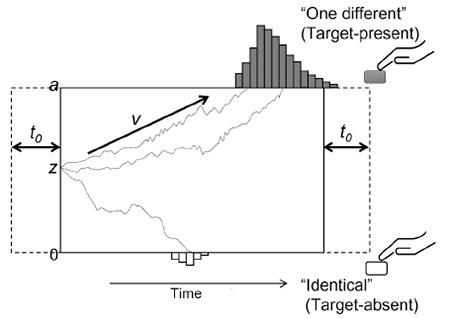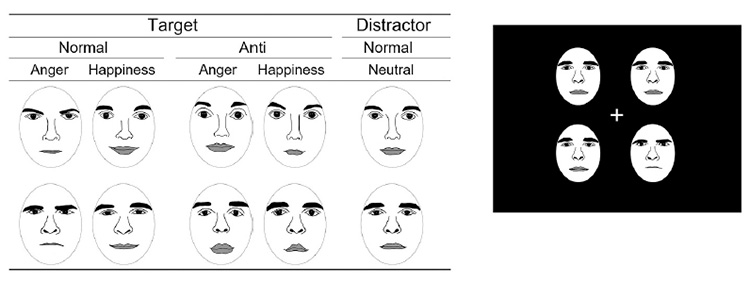SATO Wataru Laboratory
How are emotional facial expressions detected rapidly and accurately? A diffusion model analysis
(Sawada, Sato, Nakashima, & Kumada: Cognition)
Previous psychological studies have shown that people detect emotional facial expressions more rapidly and accurately than neutral facial expressions.
However, the cognitive mechanisms underlying the efficient detection of emotional facial expressions remain unclear.
To investigate this issue, we used diffusion model analyses to estimate the cognitive parameters of a visual search task in which participants detected faces with normal expressions of anger and happiness and their anti-expressions within a crowd of neutral faces.
The anti-expressions were artificially created to control the visual changes of facial features but were usually recognized as emotionally neutral.
We tested the hypothesis that the emotional significance of the target's facial expressions modulated the non-decisional time and the drift rate.
We also conducted an exploratory investigation of the effect of facial expressions on threshold separation.


The results showed that the non-decisional time was shorter, and the drift rate was larger for targets with normal expressions than with anti-expressions.
Subjective emotional arousal ratings of facial targets were negatively related to the non-decisional time and positively associated with the drift rate.
In addition, the threshold separation was larger for normal expressions than for anti-expressions and positively associated with arousal ratings for facial targets.


These results suggest that the efficient detection of emotional facial expressions is accomplished via the faster and more cautious accumulation of emotional information of facial expressions which is initiated more rapidly by enhanced attentional allocation.
Return to
Recent Research.
Return to
Main Menu.



